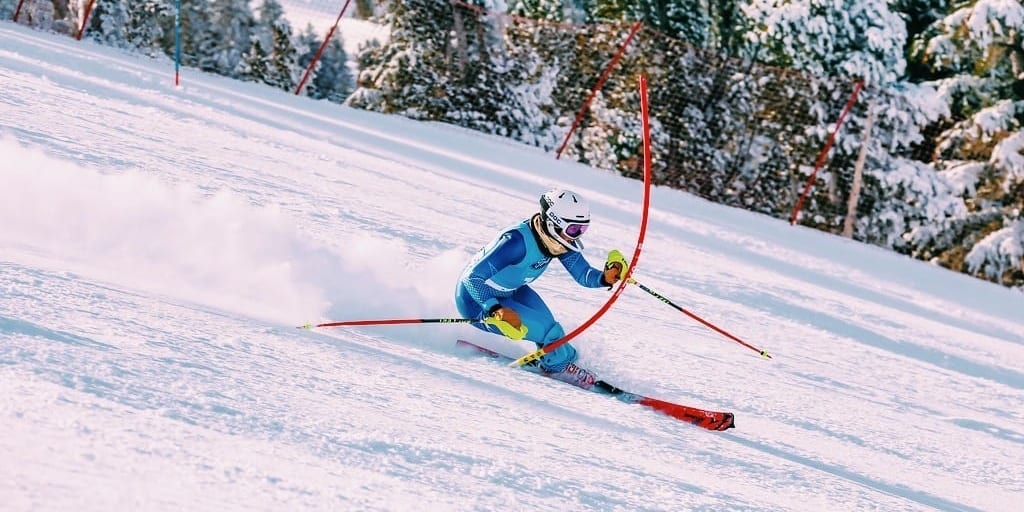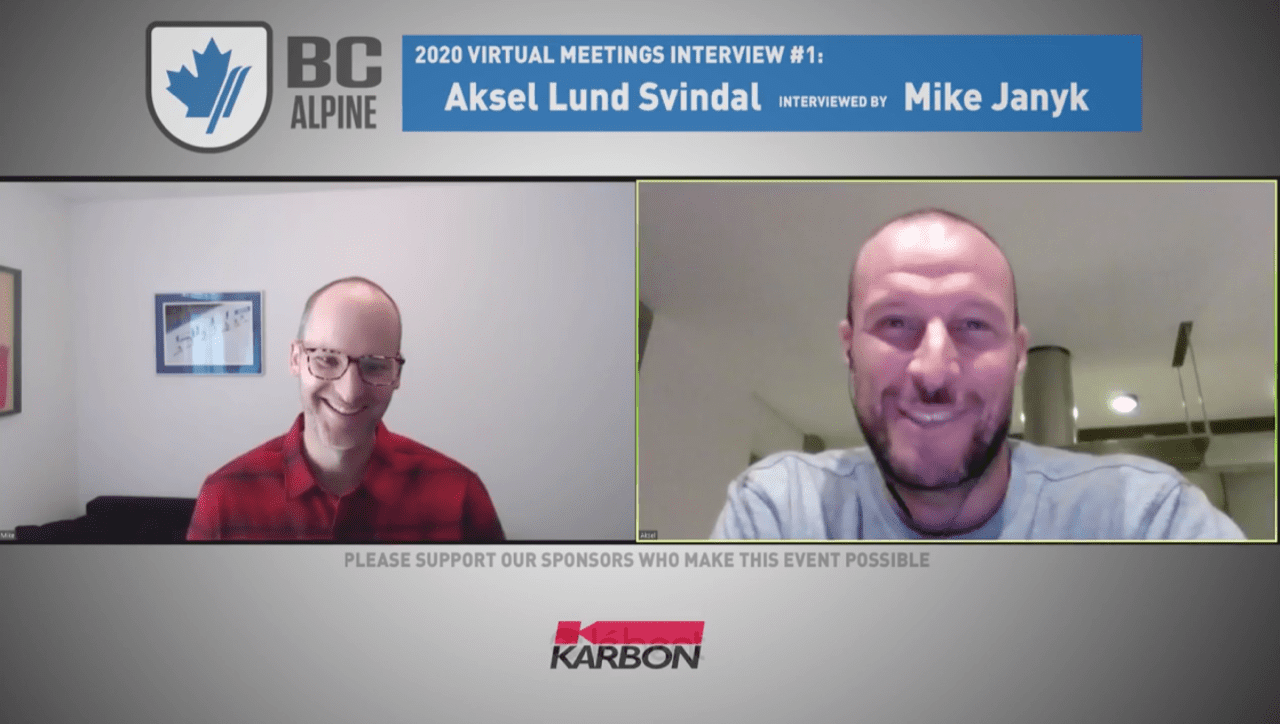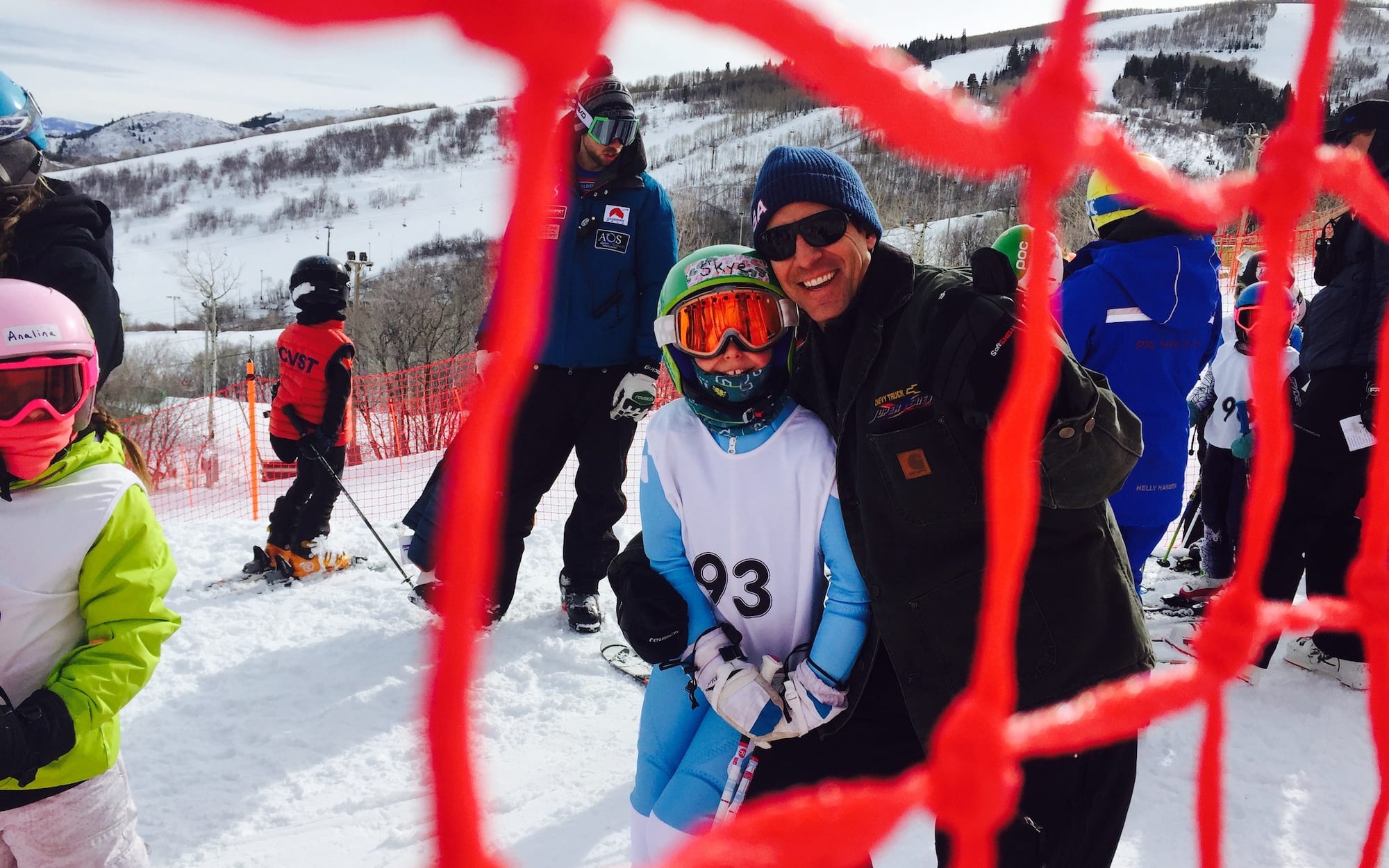How Canadian Corner Got Its Name
In the midst of the World Cup’s 50th anniversary celebrations this past January, the organizing committee of the Lauberhorn downhill in Wengen, Switzerland, invited a very special group of racers back to the legendary venue that has a particularly tricky section of the course named after these heroes of the sport.
During the 1970s and 80s, the “Crazy Canucks” (as dubbed by World Cup co-founder Serge Lange) took the men’s downhill circuit by storm, challenging European dominance in the sport for the first time and blazing a path for North American athletes to excel on the World Cup that lasts to this day. The group was able to garner 14 World Cup wins and 25 other podiums throughout their careers, the highlight being when Steve Podborski claimed the World Cup downhill title in 1982.
Podborski, Ken Read, Dave Irwin, and Jim Hunter all managed to make the trek back to Wengen to help celebrate 50 years of World Cup racing down the Lauberhorn.

Ken Read in 1980 enroute to a .02-second margin of victory in the race. (Image courtesy of Alpine Canada Alpin)
Read became the first North American man to win a World Cup downhill when he took the top spot on December 7, 1975, leading a strong team showing of five athletes in the top 15.
“I think you always remember every detail of your wins and many more details as well, good things and bad things,” Read recalls. “Val d’Isere was a very special day because I always say that I had the good fortune to be the Canadian who was the winner because Dave (Irwin) was fourth, Steve (Podborski) was 10th, Jim (Hunter) was ninth, and Dave Murray was 13th. We had never put anybody onto the podium and to have such a strong team performance was a very, very special moment, and I knew that the only reason I was first was because I had to go faster than four other guys.”
Hunter, seen by many as the first Crazy Canuck, finished third in the 1976 edition of the Lauberhorn, and credited the team’s unique camaraderie as key to their success.
“The thing that sticks out in my mind is that it takes a team sometimes to be the best you can be,” he says. “Ken really paved the way for us by winning in Val d’Isere, but it inspired me and had a huge effect on me because I had not been able to get on the podium.”
Wengen is a particularly special place not just for the Canucks, but for the World Cup as a whole with the track’s stunning views and incredible length that tests every aspect of a racer’s skill set.

“I remember the first time I was here and saw the finish line down in the valley and I thought there was no way a human being could be there in two and a half minutes, and suddenly, I was one of those racers,” says Podborski.
“I’ve always loved Wengen because it taxes the racer beyond physically,” adds Hunter. “There are other downhills that tax you physically but this course not only taxes you physically and technically, but when you get to the last 30 seconds and you still have that horrible finish to get through, you all of a sudden have to become mentally tougher.”
The 1976 races in Wengen were particularly special for the group not only because of Hunter’s third-place finish, but because that was also the year that both the “Crazy Canucks” moniker was first used and the now legendary Canadian Corner got its name.
“I was up watching Canadian Corner, and I think the course is a lot better than when I raced,” says Hunter. “When I raced, I remember seeing a lot of ruts and a lot of holes because there just wasn’t the course preparation there is now.”
 Canadian Corner is located just below the iconic Hundschopf jump where after flying through the rocks and powering through a right-footed compression, racers are flung into the air by the Minchkante jump before executing a demanding left-footed fallaway turn – the Canadian Corner.
Canadian Corner is located just below the iconic Hundschopf jump where after flying through the rocks and powering through a right-footed compression, racers are flung into the air by the Minchkante jump before executing a demanding left-footed fallaway turn – the Canadian Corner.
So just how did this infamous part of the track get its name? During the second of two downhills scheduled in Wengen in 1976, both Read and Irwin fell victim to the fallaway, with Irwin requiring a trip to the hospital.
“Canadian Corner?” Irwin recounts. “I remember when I crashed there once. I remember now crashing and I looked up and Ken was looking down at me. He had fallen maybe two or three skiers before me, and I was a foot from his feet when I stopped sliding. Ken, do you remember what you said to me?”
“I couldn’t say anything to you because you were unconscious,” Read responds with a chuckle. “You were out. There was no talking to you.”
Irwin was evacuated from the hill via helicopter and taken to the hospital in Interlaken where it was discovered that he had suffered a severe concussion, broken ribs, as well as numerous facial cuts and abrasions due to the shattering of his eyeglasses in the fall. Passing in and out of consciousness for the next three days, Irwin ended up spending an entire week in the hospital.
Thankfully, Irwin managed a full recovery and went on to finish eighth in the 1976 Olympic downhill in Innsbruck, Austria, three weeks later.
“I’ll say that now I remember why it’s called Canadian Corner,” Irwin adds. “I’m not crazy, I’m a Canuck!”





















